Living with varroa
How the varroa mite will change the face of the Australian beekeeping industry
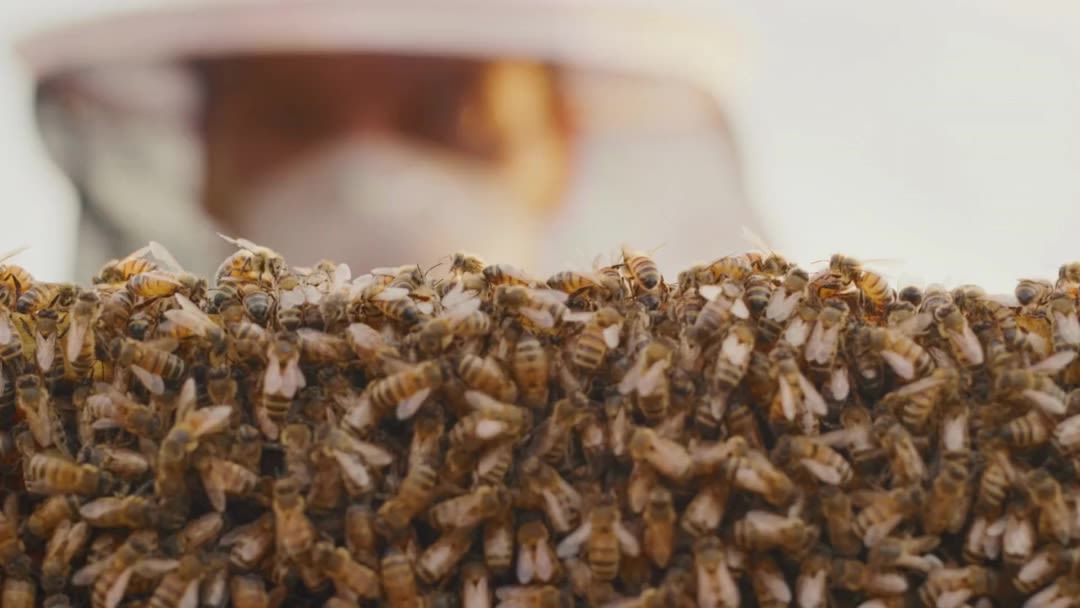
When the NSW Government announced efforts to abandon the state’s varroa mite eradication strategy and switch to a management approach, fears of a nation-wide biosecurity emergency became front and centre for the Australian beekeeping industry.
While reactions to the announcement have been mixed, many have been left confused about what this change in tact actually means.
To get to the bottom of this big question, we picked the brains of four academics from the University of New England.
What is the varroa mite and why is it so bad?
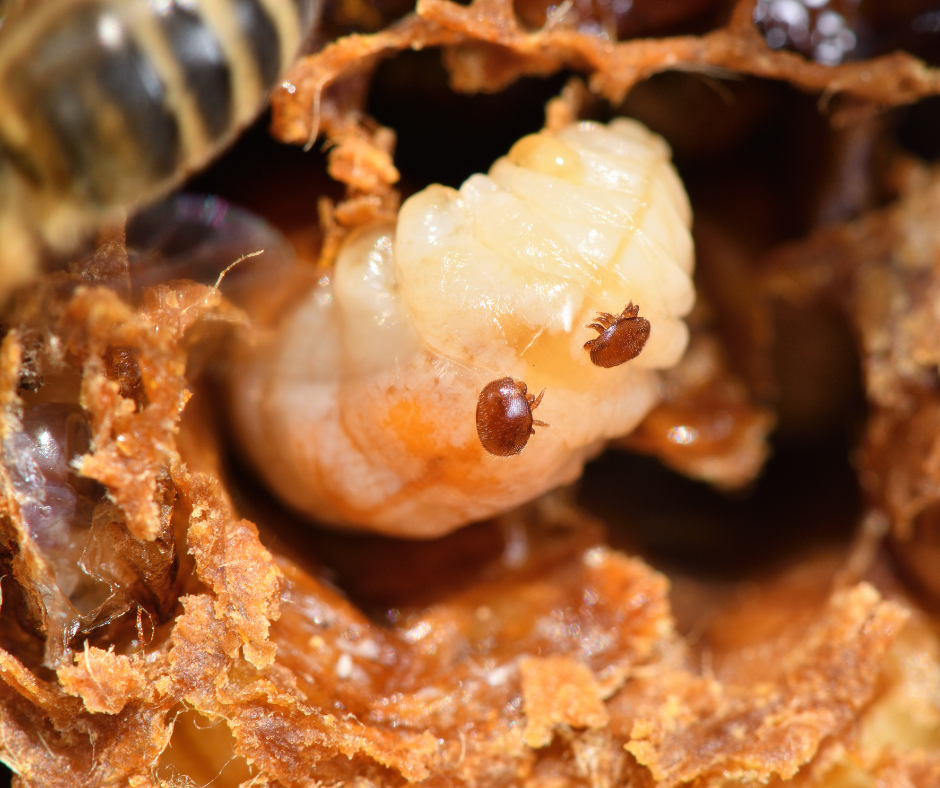
The varroa mite is a tiny reddish-brown parasite that feeds off the larva and pupae of honey bees.
It emerges with the adult bee and compromises its immune system over time, making it more vulnerable to disease and pesticides.


The first case of varroa mite was detected in Australia in June 2022.
NSW Bee Biosecurity Officers found the first sign of the mite at the Port of Newcastle, NSW, during routine surveillance.
Until now, biosecurity efforts have been focussed on eradicating the parasite through mandatory hive destruction in ‘red zones’ and limiting hive movement.
However, this approach has been unsuccessful, leading to the NSW DPI to transition to a management strategy.
What will the shift to a management strategy mean for apiarists and the beekeeping industry?
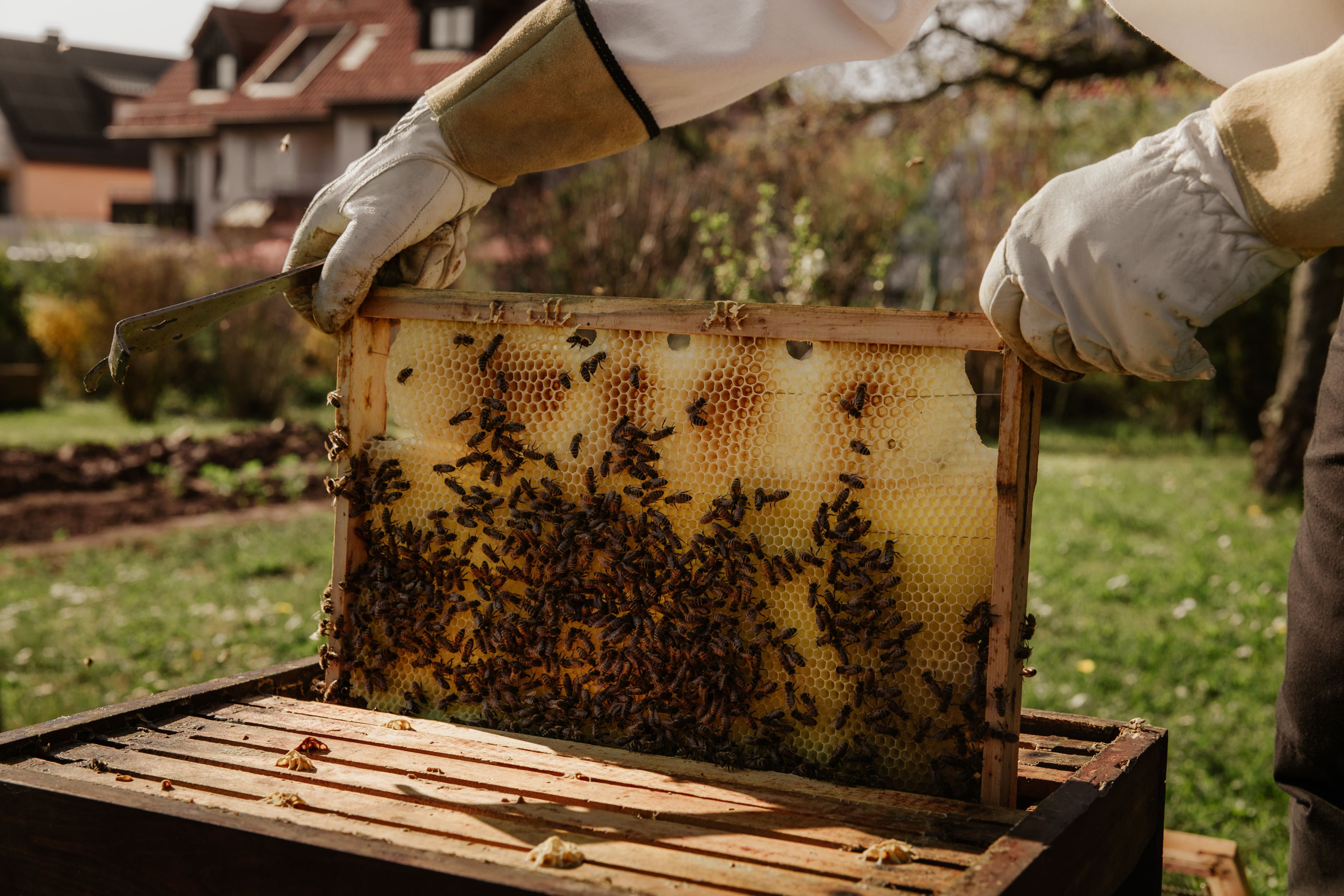
Carolyn Sonter is a UNE PhD candidate and apiarist, and fears the changes will have devastating impacts on the industry.
“Beekeeping in Australia will never be the same again,” she says.
“There is no miracle cure for managing varroa.”
While other countries have successfully implemented management strategies, Carolyn says Australia faces additional pressures that make this difficult.
“Our climate and the presence of Small Hive Beetle (SHB) means we face additional challenges to New Zealand and Europe.
"Similarly, the management we adopt needs to consider that in most regions of Australia the climate is mild in winter and there is no brood break, meaning that varroa will reproduce all year.
“Unfortunately, there is a lot of incorrect information already appearing on social media regarding the breeding of varroa resistant bees and natural varroa treatments.
"The result of this will be that many hives will die initially and only the hives of those beekeepers willing to invest the time, effort and funds in managing their hives according to scientifically sound methods will survive.”
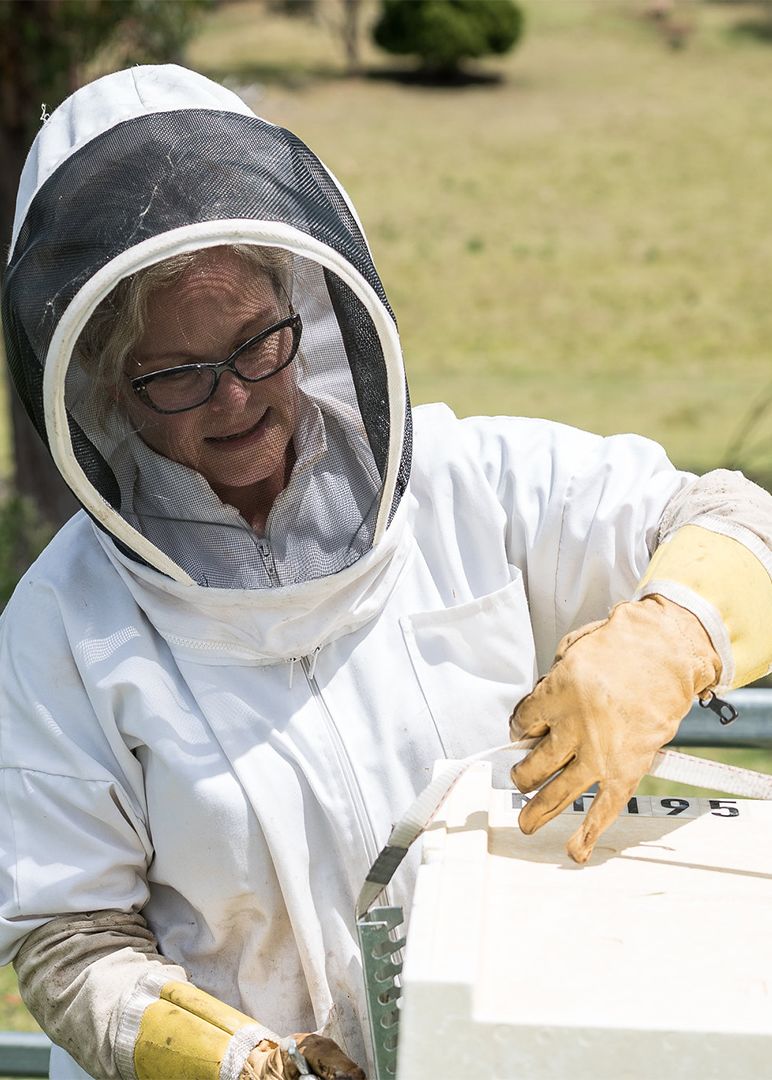
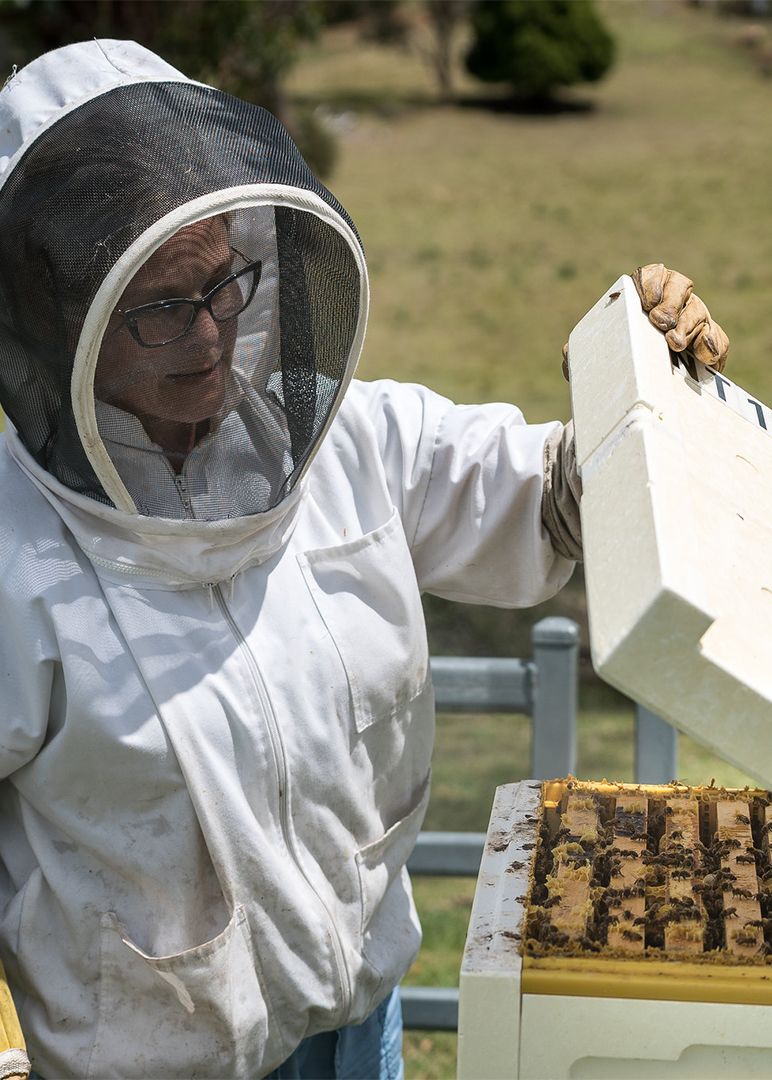
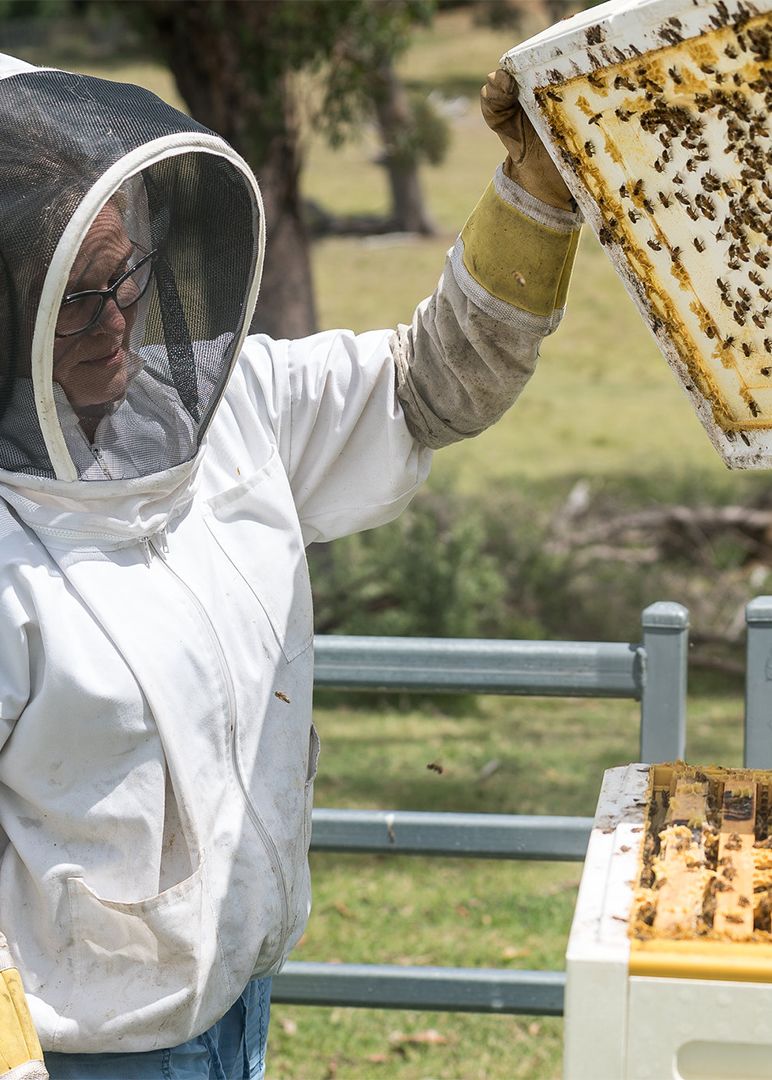
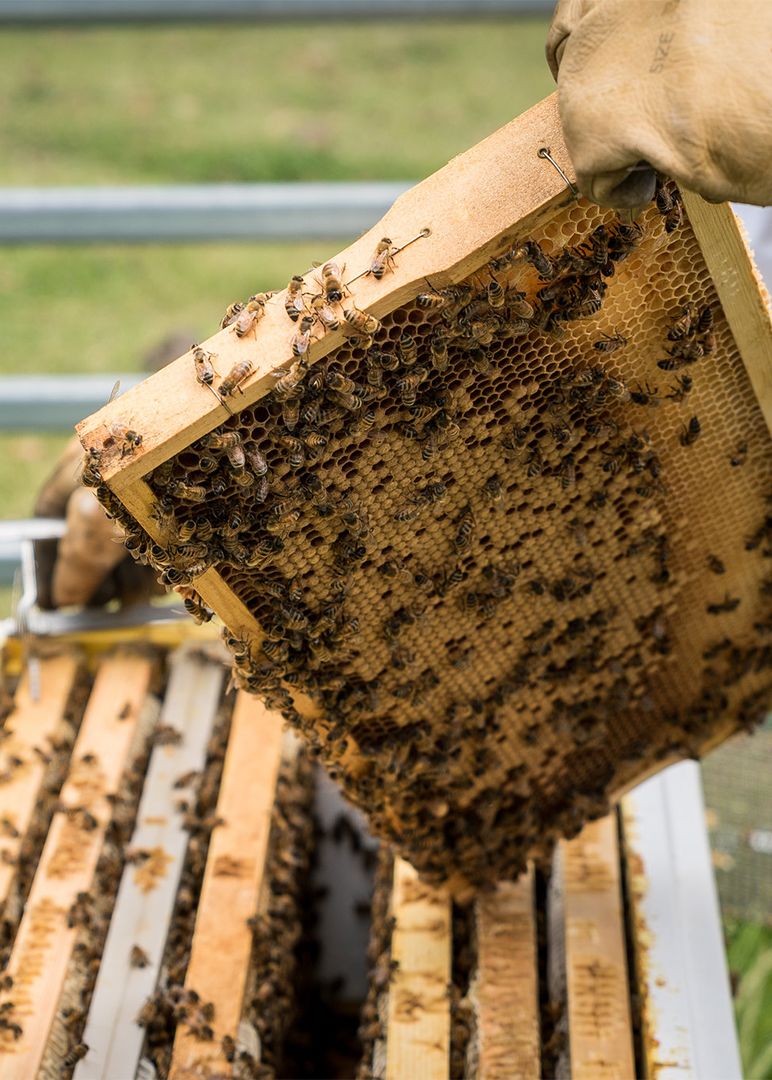
Do the claims that bees could become resistant to the varroa mite bear any truth?
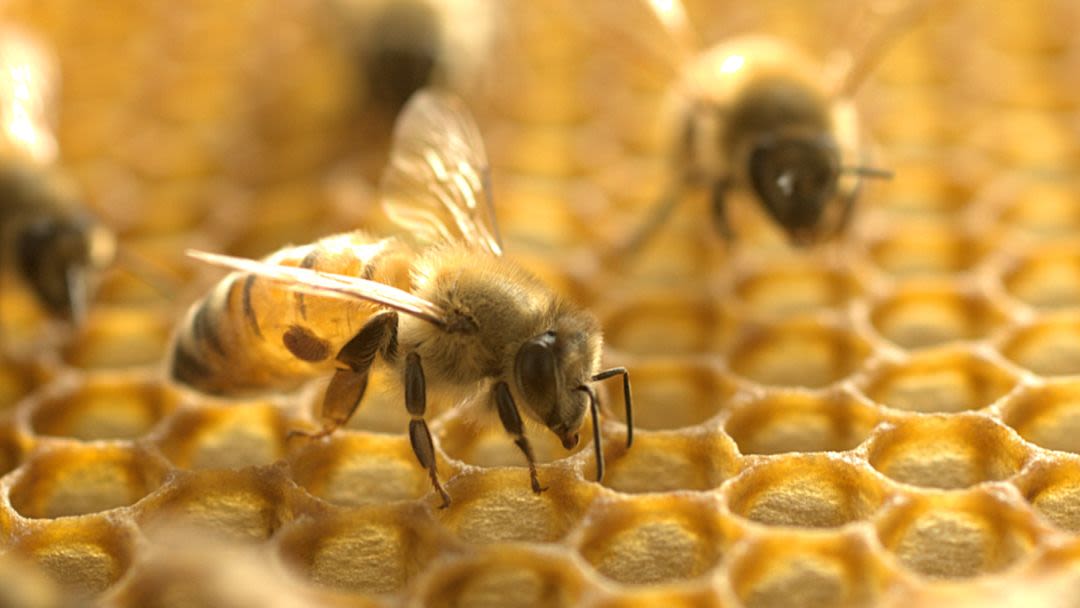
Dr Tommy Leung from UNE’s School of Environmental and Rural Science is an expert in the field of parasitism, evolutionary ecology, and disease ecology, and says while resistance is possible, it comes at a price.
“In the wild, populations of hosts and parasites are often locked in an evolutionary arms race,” he says.
“This arms race is particularly intense if the parasite is very harmful towards the host and/or limits the host’s reproduction in some way.
“In such situations, it is evolve or die for both sides. So, you often have relatively rapid evolution of defences in the host population, which in turn spurs the parasite population to evolve countermeasures.
“This comes at great cost for a large swath of the host population (the ones which are susceptible to the parasite) that end up dying or rendered sterile by the parasite.
“There is also no guarantee that the host will evolve a completely impenetrable defence – quite often, the resulting host strategy is better damage control or ways to cut their losses, rather than being able to outright repel the parasite.”
When you consider the fact that commercial honey bees are tiny livestock, it gets even more complicated.
“For them to develop resistance, they would have to be actively selected and bred for such characteristics, whatever that may end up being. And breeding for resistance may come at the expense of other characteristics such as reproductive output, honey production, or other traits valued by the apiary industry.”
"In the wild, populations of hosts and parasites are often locked in an evolutionary arms race."
So, with parasitic resistance pretty much out of the question, where does that leave the industry?
“For hobbyists with only a few hives, the added costs and time associated with managing varroa will be achievable if they are properly educated,” says Carolyn.
“However, for commercial beekeepers, it will be an additional burden on top of the impact of extreme weather and bush fires that have heavily impacted the industry over the past few years.”
These added costs could come in the form of extra staff, increased labour, and the cost of losing hives to the mite, despite having the best varroa management practices in place.
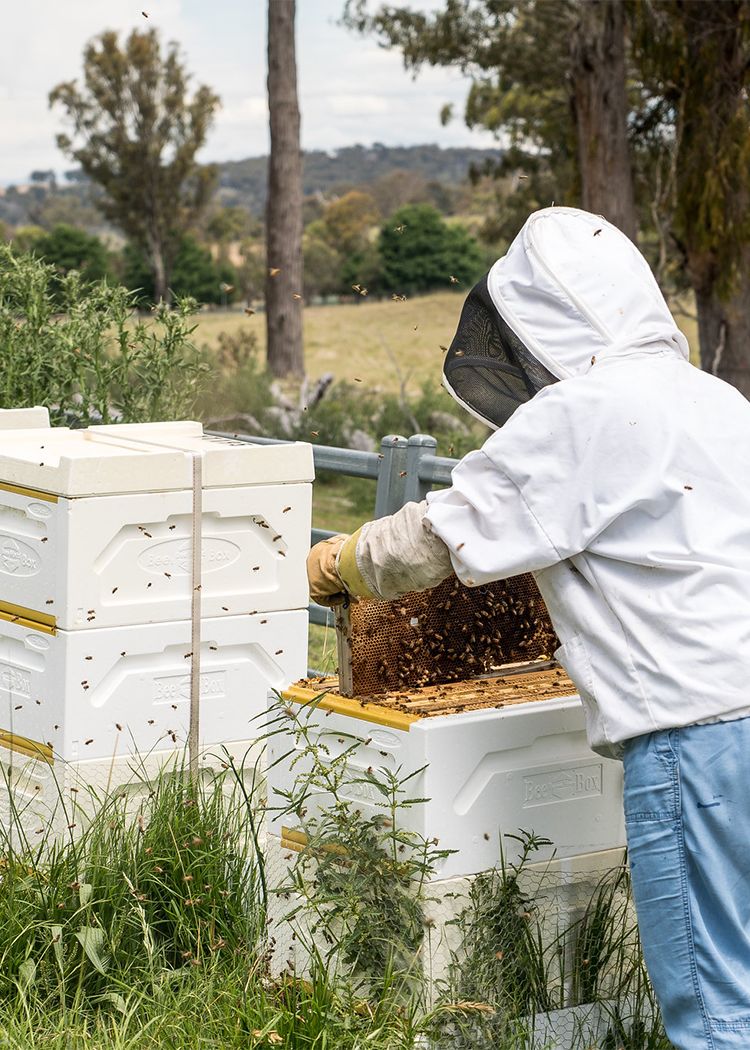
So, who will cover these costs?
Associate Professor Susie Hester is an economist within the UNE Business School and has spent her career working on issues related to invasive species-management.
While it’s likely beekeepers will absorb most of these costs, in the short-term, she predicts consumers may foot the bill when paying for certain products reliant on honeybee pollination.
“The increase in prices and the duration for which they remain high will depend on how quickly the number of managed hives can be increased," she says.
"It will also depend on whether consumers are willing to substitute higher priced products for other less-affected products.
"For example, more almonds might be imported from overseas, and demand for fruit and vegetables not heavily reliant on honey bees, might increase.”
With around 35 agricultural industries fully, highly or partially reliant on pollination via honey bees, the price rises could be wide-ranging.
ALMONDS
69 bees are needed for 1kg of almonds
180,356 hives required for Australian production
100% reliant on honey bees
APPLES
4 bees are needed for 1kg of apples
26,400 hives required for Australian production
100% reliant on honey bees
MANGOES
21 bees are needed for 1kg of mangoes
40,000 hives required for Australian production
90% reliant on honey bees
AVOCADOS
18 bees are needed for 1kg of avocados
22,500 hives required for Australian production
100% reliant on honey bees
PUMPKINS
5 bees are needed for 1kg of pumpkins
14,500 hives required for Australian production
100% reliant on honey bees
WATERMELONS
2 bees are needed for 1kg of pears
14,000 hives required for Australian production
70% reliant on honey bees
PEARS
1 bee is needed for 1kg of pears
2500 hives required for Australian production
50 - 100% reliant on honey bees
MACADAMIAS
140 bees are needed for 1kg of macadamias
49,375 hives required for Australian production
100% reliant on honey bees
Is there an alternative to using honey bees as pollinators?
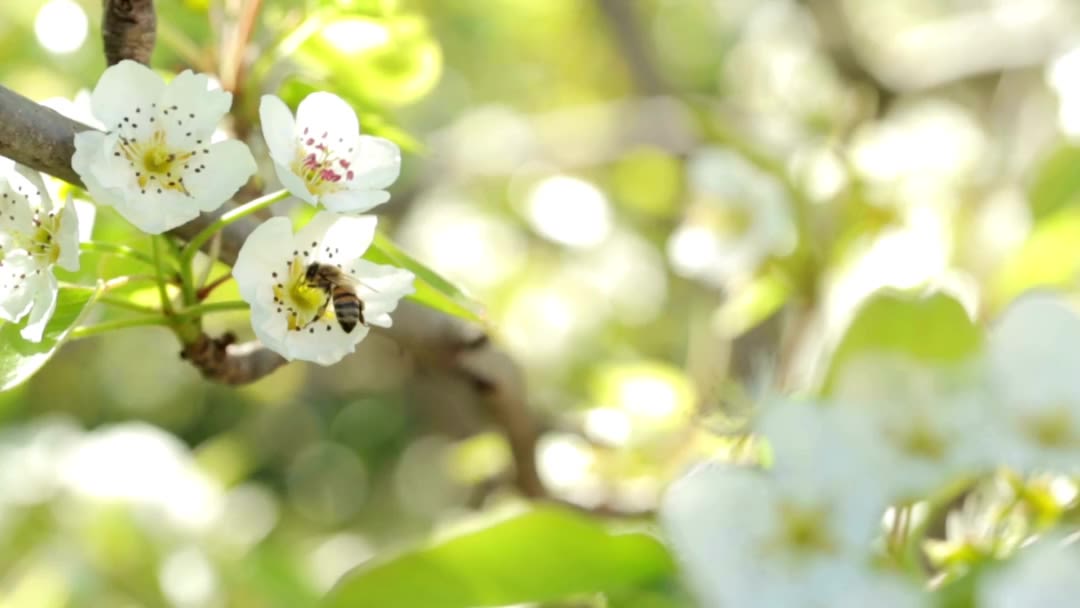
As Susie mentioned, importing more products from overseas may be required, and consumers may need to forego their produce of choice for something more cost-effective.
However, alternative pollinators could help fill that gap.
UNE PhD candidate, Abby Davis, is researching the effectiveness of flies as alternative or supplementary pollinators to honey bees, and her results so far are promising.
“So far, we have found that some fly species are effective pollinators of berry and carrot crops,” she says.
“We first record which fly species are found visiting the flowers of the crop we are researching and identify if they could provide significant pollination services.
"We then compare how well the fly pollinates compared to the honey bee, since honey bees are the industry- standard pollinator. Sometimes we find that the flies perform as well as, or better, than honey bees.”
While many people associate flies with garbage bins and bad smells, Abby explains that some species actually share a lot of similarities to the honey bee. For example, their hairy bodies are perfect for trapping and transporting pollen, while their diet is made up of floral resources such as nectar and pollen. Some can even look or behave like honey bees.
“If these flies can be mass reared, or if growers are willing to support the habitat they need to reproduce on their farms, then perhaps some flies can be used to help supplement bee pollination services.”
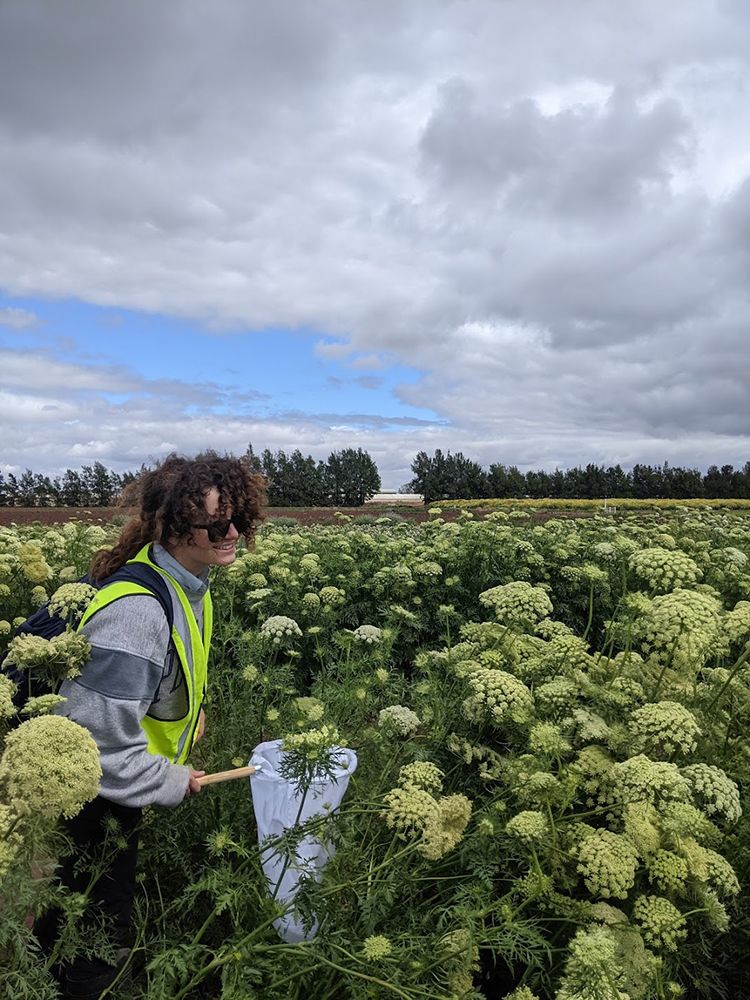
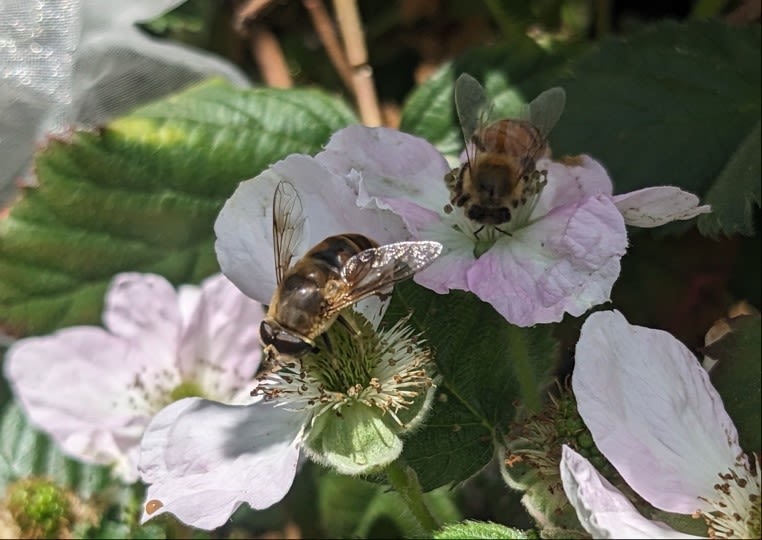
The European drone fly (left) and the European honey bee (right) visiting blackberry flowers in Coffs Harbour, New South Wales, AU
The European drone fly (left) and the European honey bee (right) visiting blackberry flowers in Coffs Harbour, New South Wales, AU
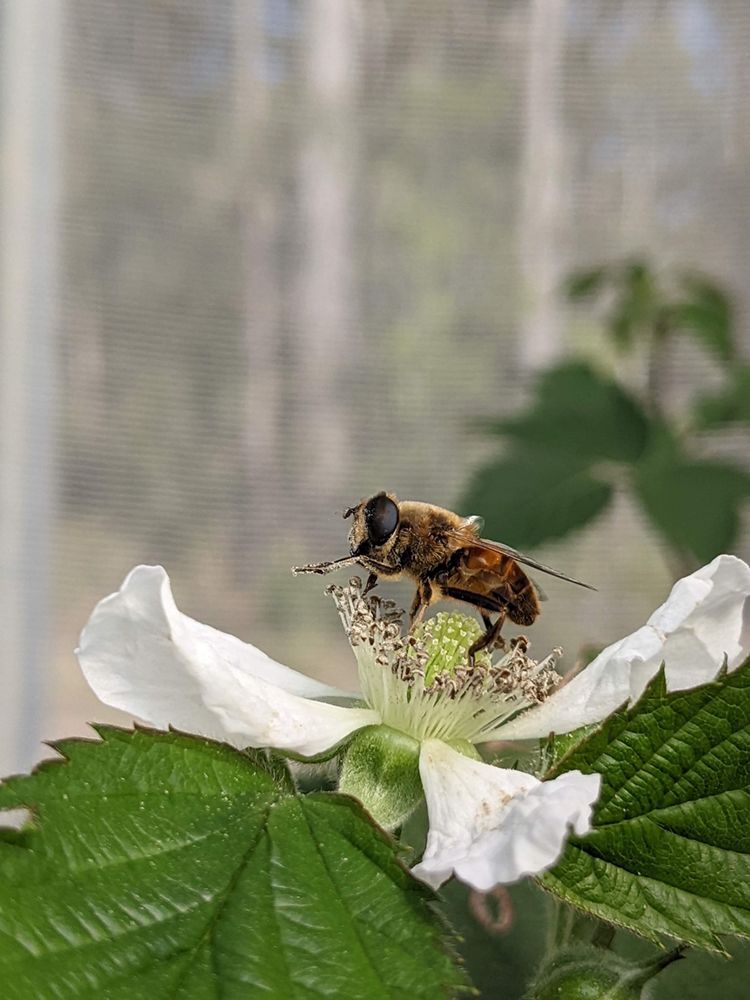
Syrphid fly, Eristalis tenax, visiting a blackberry flower at a commercial berry orchard on the NSW Mid North Coast.
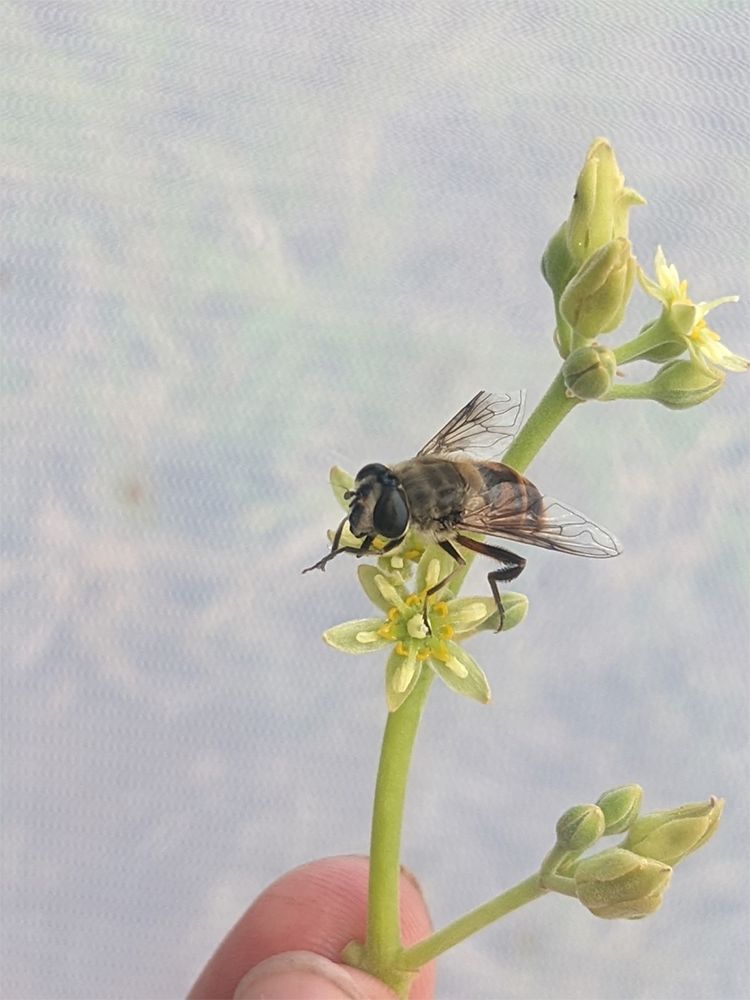
Syrphid fly (Eristalis tenax) visiting a female avocado flower in Mareeba, QLD, 2022.
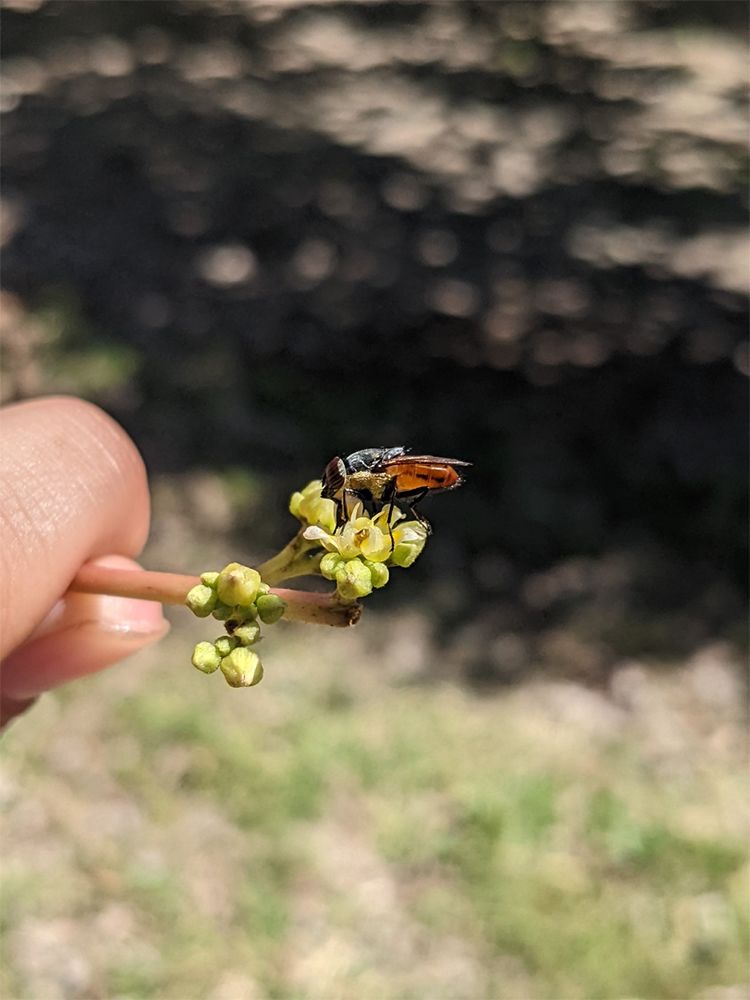
Native rhinid fly, Stomorhina xanthogaster, visiting an mango flower in Mareeba, QLD, 2022.
What have we learnt from the varroa mite outbreak?
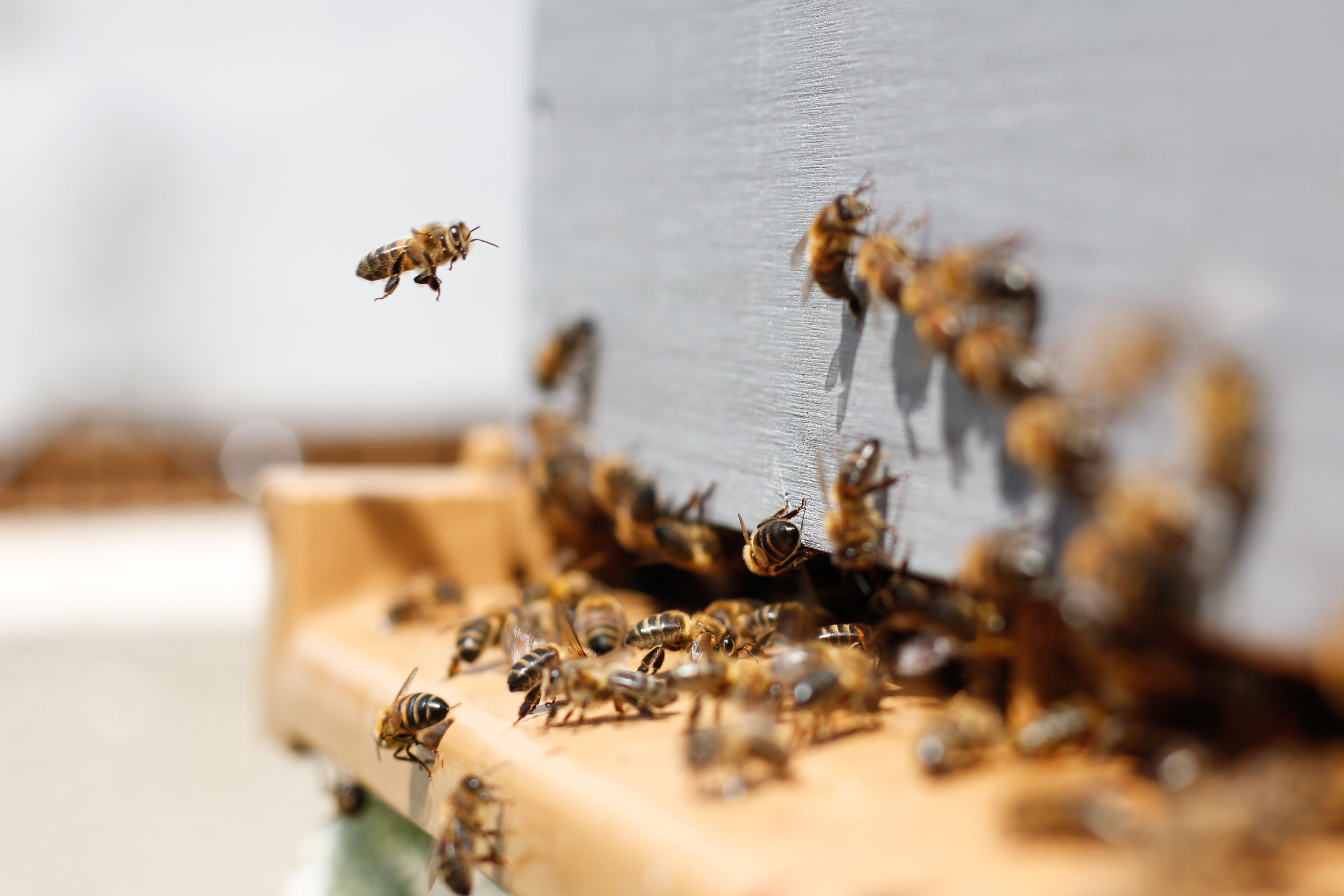
From a biosecurity perspective, Susie says there are a few things we can take away.
“When an incursion of a new pest or disease occurs, for eradication to be economically and technically (and socio-politically) feasible it is really important to find the outbreak/s early and to understand the full extent (delimit) the incursion as quickly as possible.
“But in reality, successfully achieving these outcomes is very challenging – there are many pests and diseases of plants and animals that are not present in Australia, and resources to look for them, and respond to detections are limited.
“It seems that failure to find the varroa incursion early, and failure to understand the full extent of the incursion quickly, have resulted in the conclusion that eradication is not feasible.
“Also, following detection of a pest such as varroa and the implementation of a response strategy, it is critically important to put rules and regulations in place that encourage the behaviour of stakeholders that is desired by the biosecurity agency.
“The impact of rules on stakeholder behaviour needs to be given far more attention in biosecurity.
"In many cases, well-intended rules and regulations can actually create counterproductive consequences – ie. the illegal movement of hives, as has been reported to have occurred in the case of varroa.”
